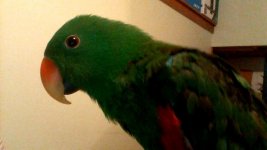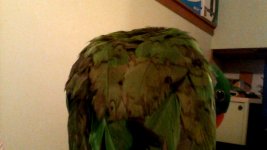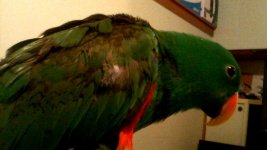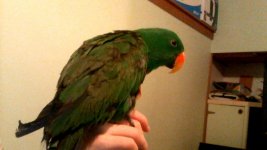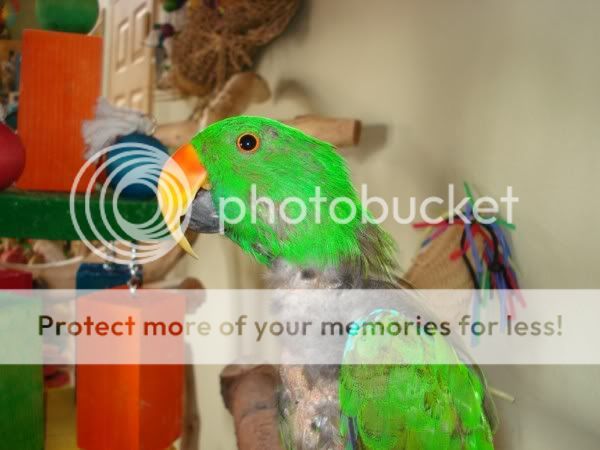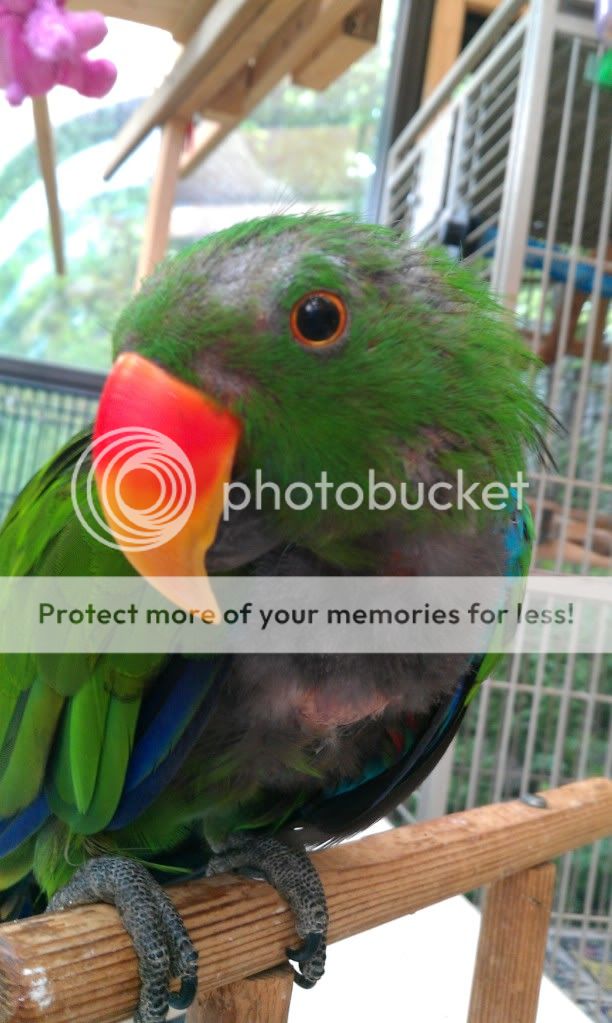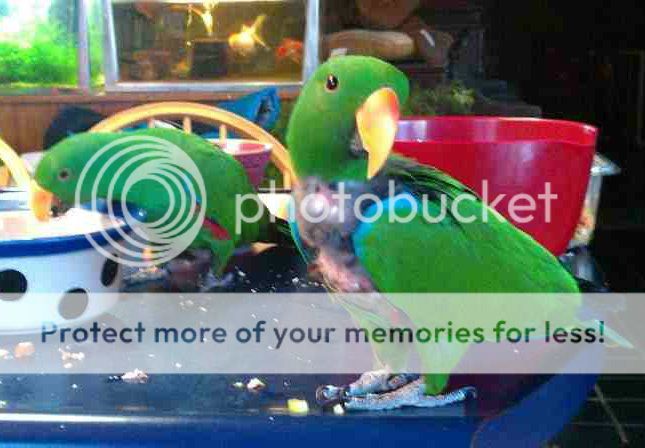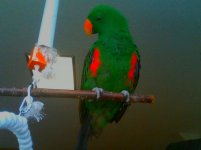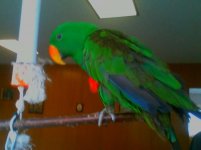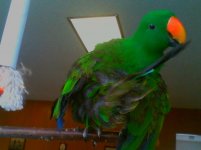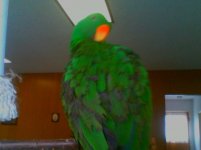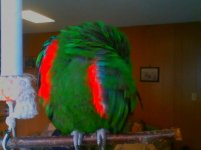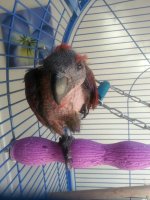Hello Everyone,
I was hoping someone who knows A LOT about feathers could take a look at these feathers. I am wondering what all darker feathers are caused by (I.e. are these dietary, disease, stress bands, or regular feather bronzing).
I have been to see a Veterinarian when these first appeared. She said (as an Eclectus Owner) to watch and observe. Nothing else came of it, so did not go back for that although he is due for a check-up soon I do believe.
Anyone have any thoughts? I apologise for the poor quality on the photos, outside of the dark spots the green does look BEAUTIFUL in the light. He is also quite active and social so I would like to believe he is not "sick bird".
Any opinions would be appreciated (although please be specific),
A little bit of background on Feathers:
(1) These markings began to appear around 6-Months ago, and within the span of a week or two a pure vibrant green resembled this. It would have been around the beginning of first winter, and he was particularly active.
(2) Upon observation these markings have not grown any worse (at least from what I can tell). The tail feathers at the base have grown a bit bent toward base but otherwise all of the new feathers look and feel perfect.
(3) Echo is given alternating diets of Corn, Pineapple, Papaya, Nectarine, Carrots, Strawberry, Grapes, All Colors of Peppers, Peas, Beans, Millet, and other fruits and vegies we have around kitchen. (Rare Potatoes).
A little bit of background on Echo:
(1) Born last June and I received late September from experienced breeder whom I was referred to by a pet specialist and veterinarian. Raised Well!
(2) Echo is extremely active and social for an Eclectus from what I have read and been told. He spends a solid 2-Hours a day active playing with either toys or people. Another a day exploring house (Running & Climbing).
(3) Spends an additional 2-4 Hours in direct room with company, and on some nights will simply sit on my shoulder for hours when I get home. He vocalizes early afternoon and early evening to practice words quietly.
(4) HATES Bathing or Showers - I manage to have him sit on a shower rod twice to three times per week. Although, you can tell by his glare (and his vocalizations) that he is not enjoying it at all... I do lightly or soak to skin.

I was hoping someone who knows A LOT about feathers could take a look at these feathers. I am wondering what all darker feathers are caused by (I.e. are these dietary, disease, stress bands, or regular feather bronzing).
I have been to see a Veterinarian when these first appeared. She said (as an Eclectus Owner) to watch and observe. Nothing else came of it, so did not go back for that although he is due for a check-up soon I do believe.
Anyone have any thoughts? I apologise for the poor quality on the photos, outside of the dark spots the green does look BEAUTIFUL in the light. He is also quite active and social so I would like to believe he is not "sick bird".
Any opinions would be appreciated (although please be specific),
A little bit of background on Feathers:
(1) These markings began to appear around 6-Months ago, and within the span of a week or two a pure vibrant green resembled this. It would have been around the beginning of first winter, and he was particularly active.
(2) Upon observation these markings have not grown any worse (at least from what I can tell). The tail feathers at the base have grown a bit bent toward base but otherwise all of the new feathers look and feel perfect.
(3) Echo is given alternating diets of Corn, Pineapple, Papaya, Nectarine, Carrots, Strawberry, Grapes, All Colors of Peppers, Peas, Beans, Millet, and other fruits and vegies we have around kitchen. (Rare Potatoes).
A little bit of background on Echo:
(1) Born last June and I received late September from experienced breeder whom I was referred to by a pet specialist and veterinarian. Raised Well!
(2) Echo is extremely active and social for an Eclectus from what I have read and been told. He spends a solid 2-Hours a day active playing with either toys or people. Another a day exploring house (Running & Climbing).
(3) Spends an additional 2-4 Hours in direct room with company, and on some nights will simply sit on my shoulder for hours when I get home. He vocalizes early afternoon and early evening to practice words quietly.
(4) HATES Bathing or Showers - I manage to have him sit on a shower rod twice to three times per week. Although, you can tell by his glare (and his vocalizations) that he is not enjoying it at all... I do lightly or soak to skin.

Attachments
Last edited:
